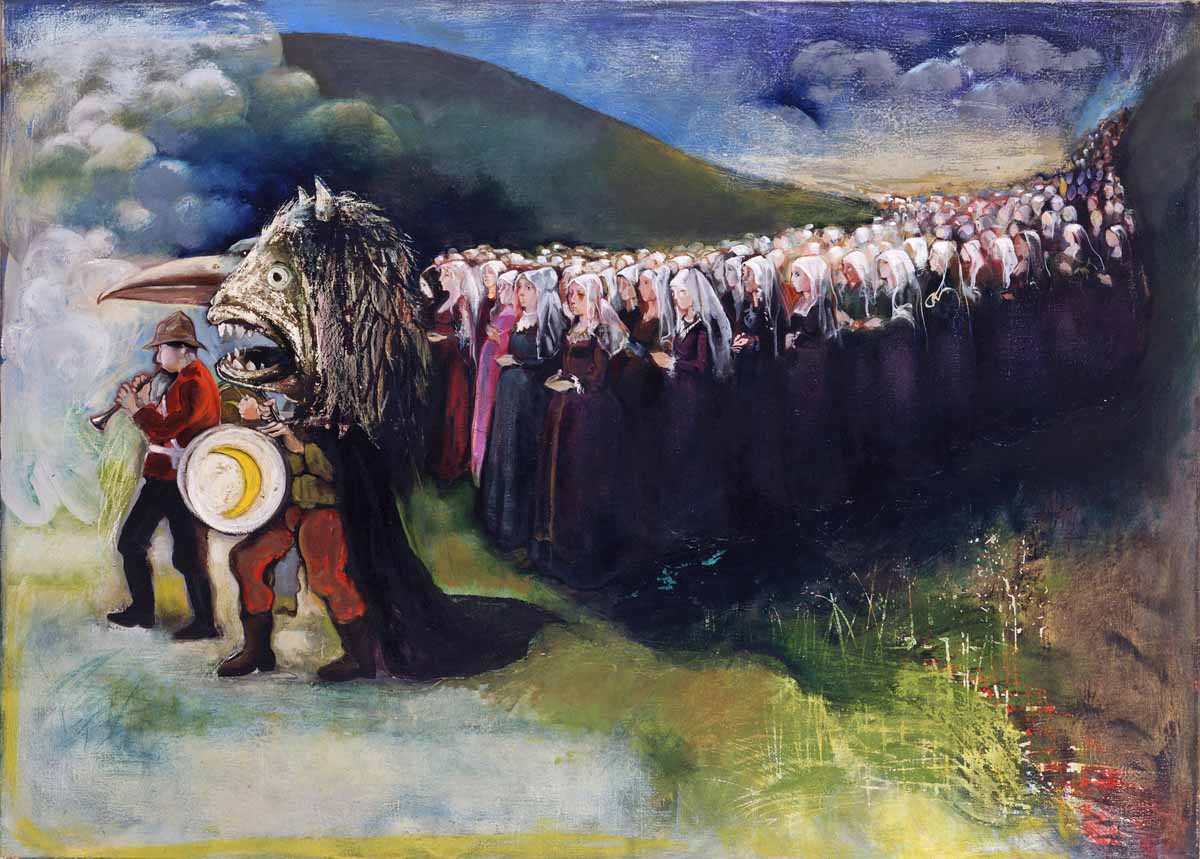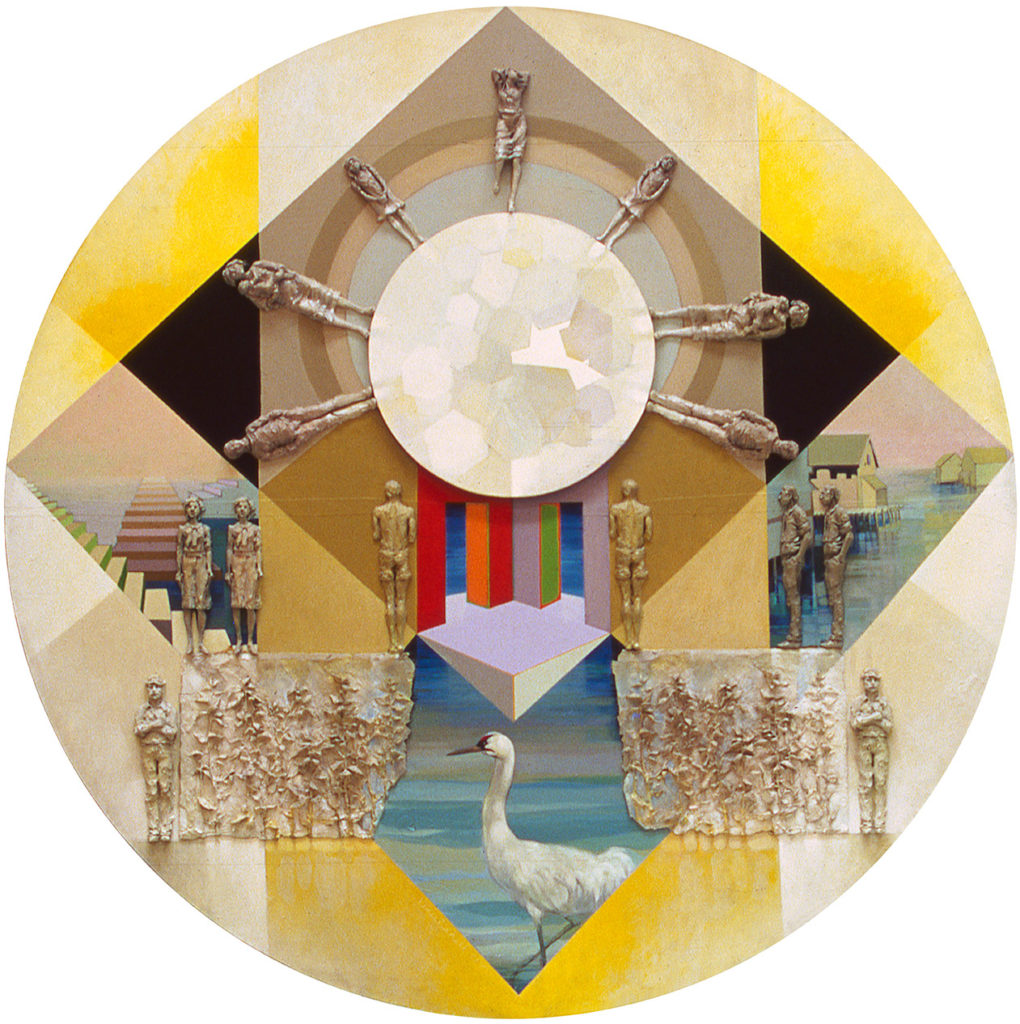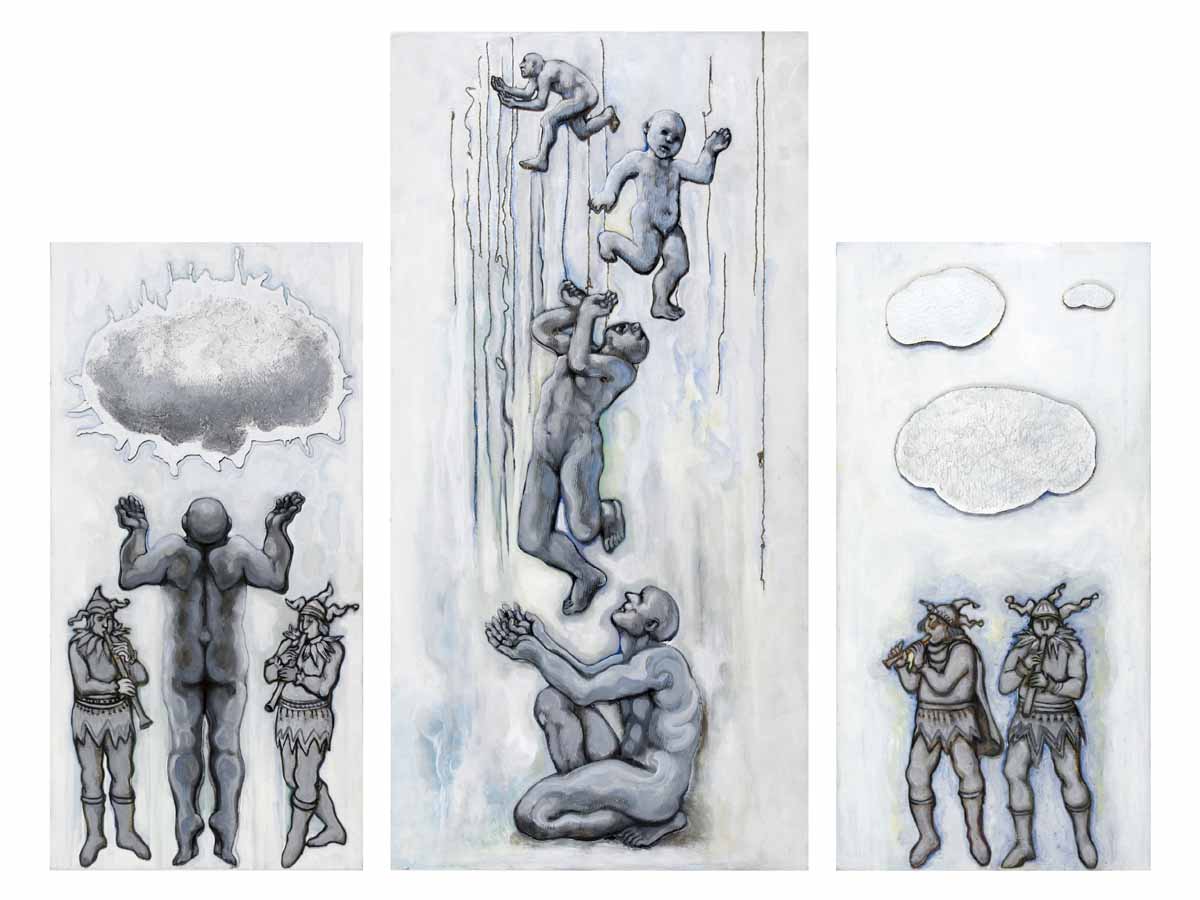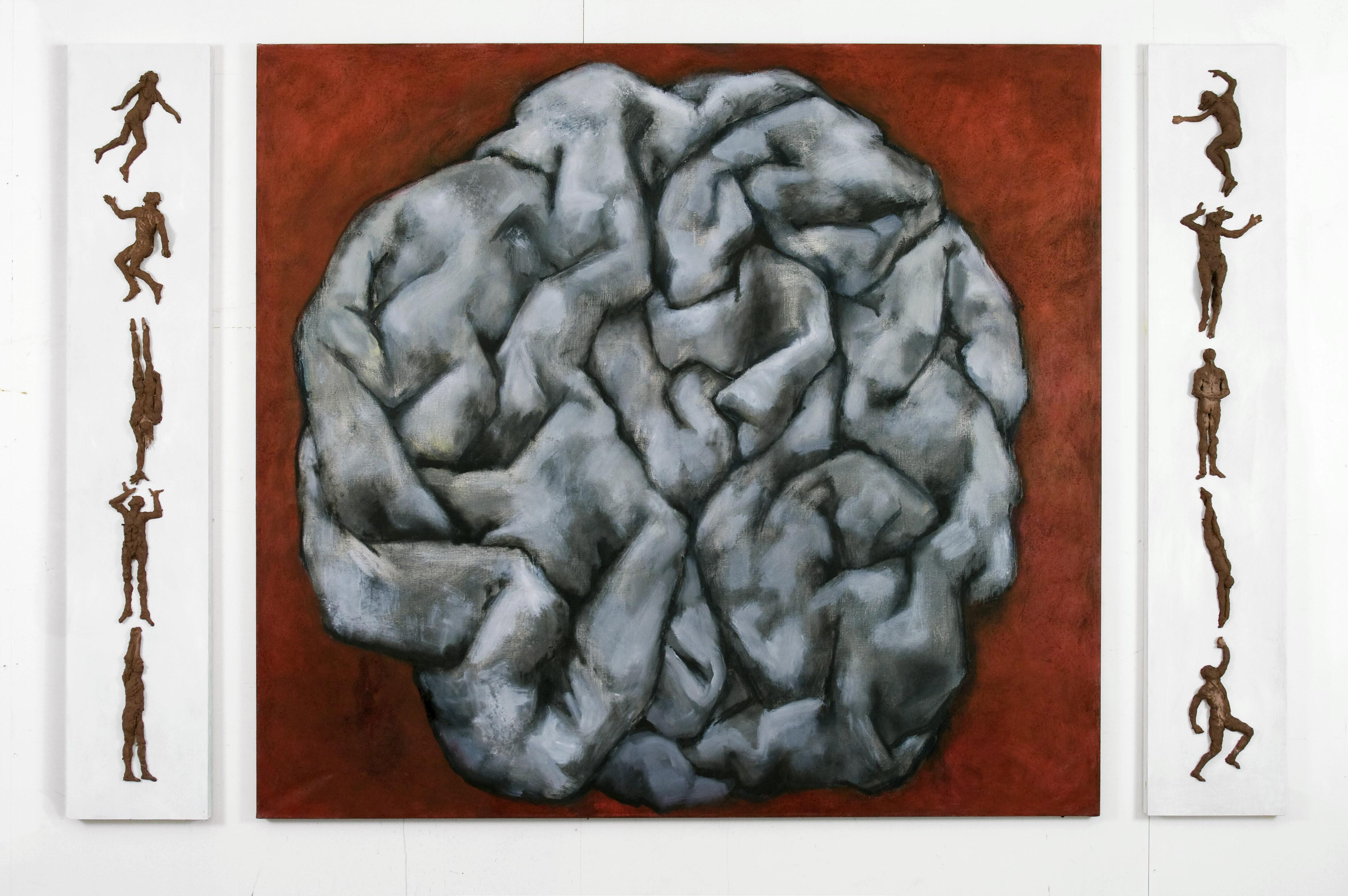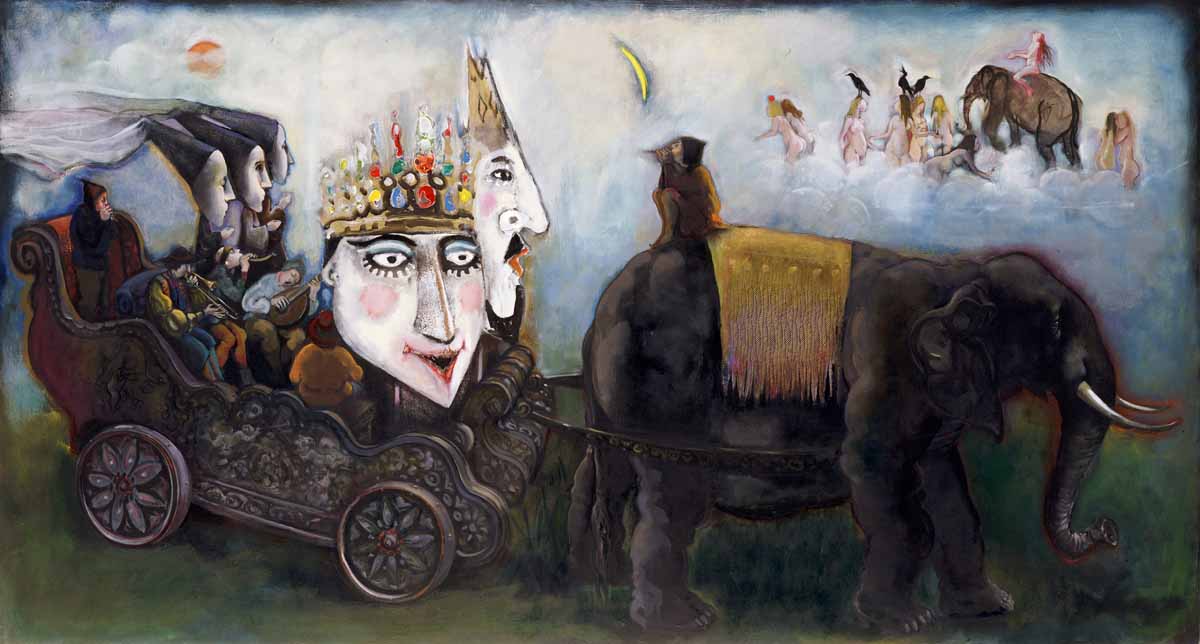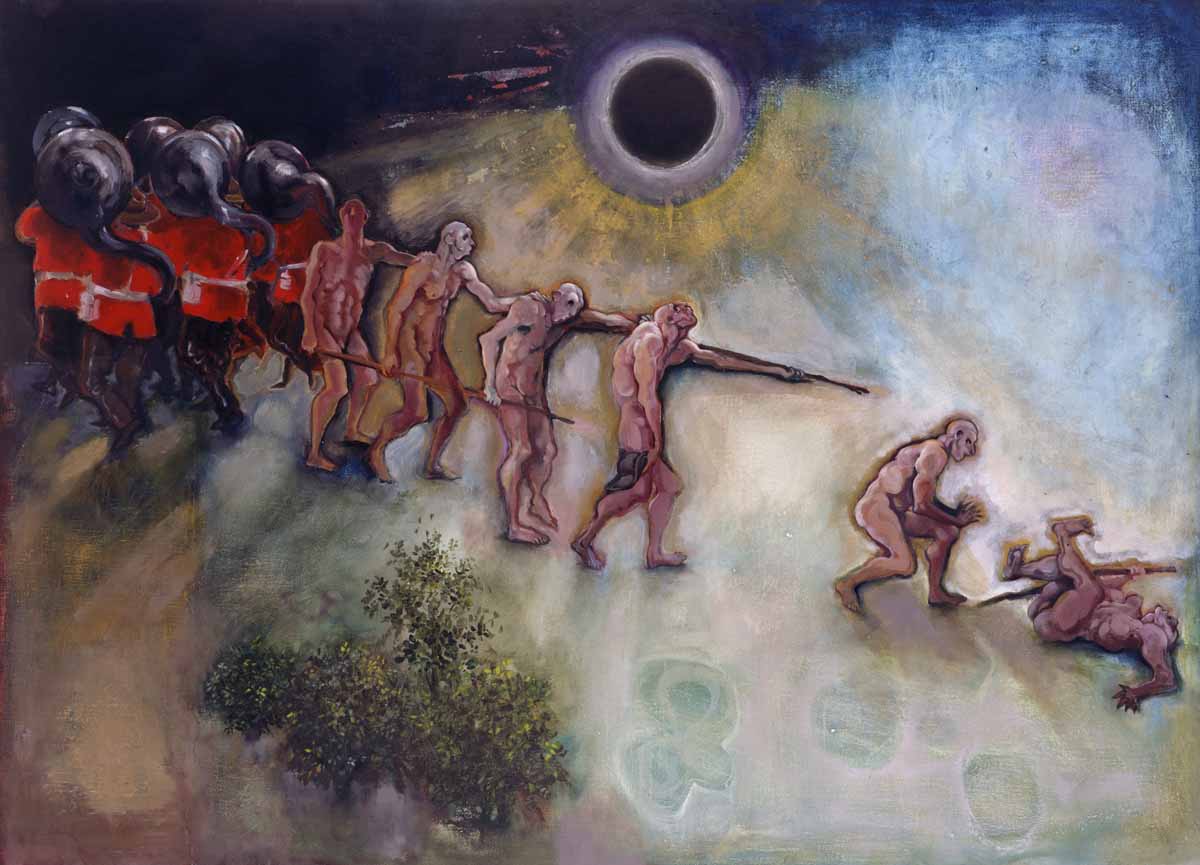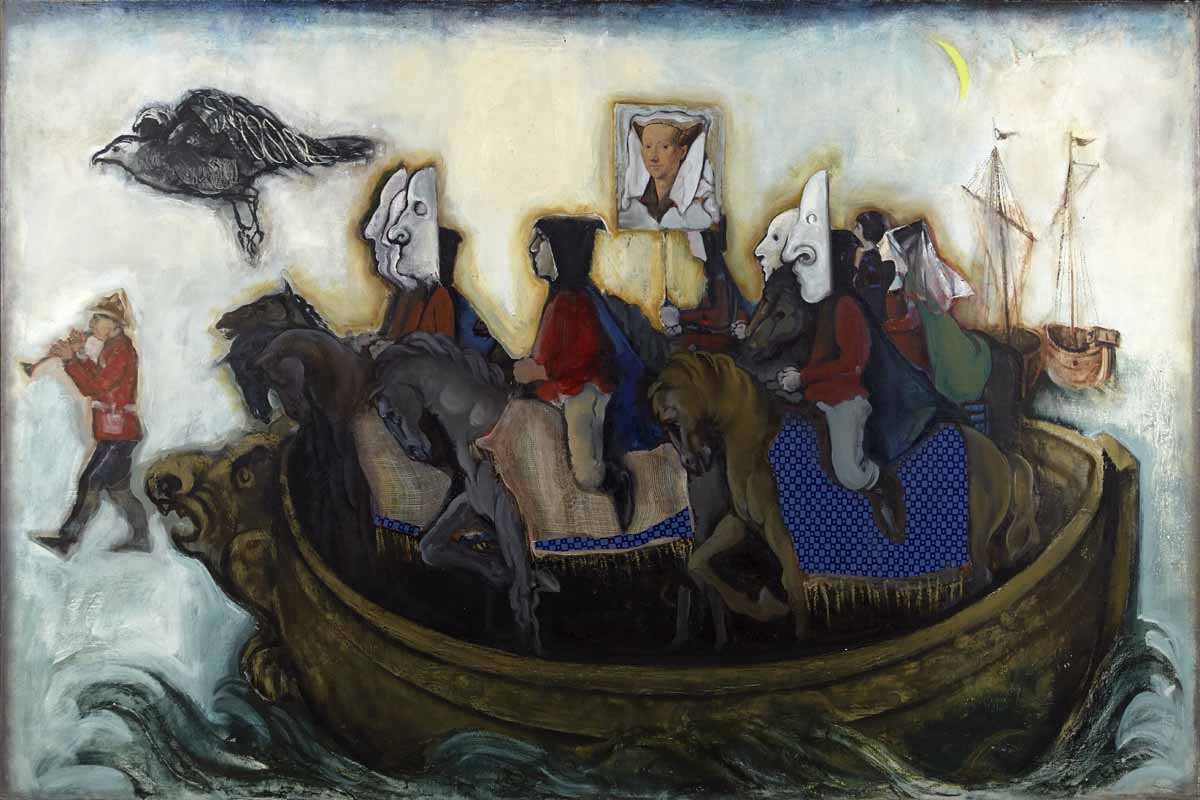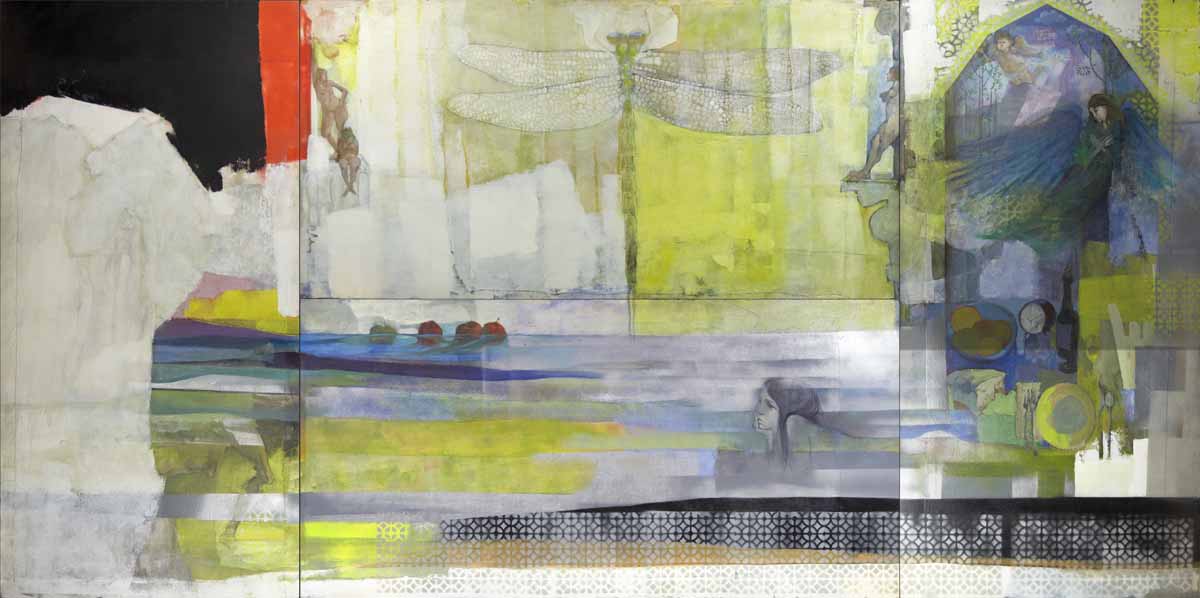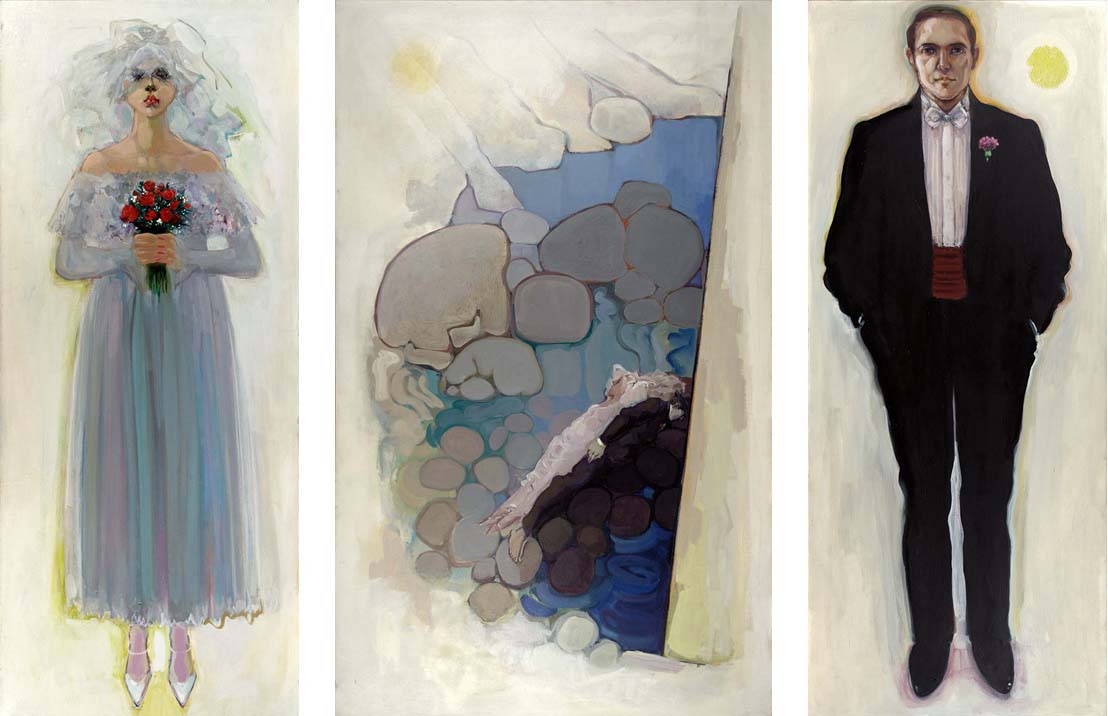An excerpt from Renee Radell Web of Circumstance, a monograph by Eleanor Heartney, describes wall murals created by Renee Radell since the 1970s. Heartney addresses each work within the context of recurring themes employed by Radell that collectively form the literary structure of her essay.
Wall Murals: Raindrops Ceremonial Triptych
“Over the years, Radell has at times created [wall murals] and mural-scale works that allow her to expand on capacious themes. Raindrops Ceremonial Triptych (2010) explores Radell’s ongoing theme of fate and choice. Here raindrops serve as the metaphor for life’s bounty and potential. Flute-playing jesters summon the rain cloud in the left panel. The center panel shows a ritual wherein humans of all ages attempt to capture the falling raindrops, represented as quivering, glued-on strings, thereby making the most of what life has to offer. The sky clears in the right panel, symbolizing the ephemeral nature of opportunity and the need to act when chance presents itself. [editor’s note: readers may notice that one of the flute players in this right panel graces the jacket of the monograph].
Wall Murals: Involution with Participants
Involution with Participants (2010, plate_) takes on the larger issue of the fate of Mankind. As the title suggests, it explores the possibility of human involution, a term that encompasses many meanings, including, in medicine, the shrinking of an organ and, in philosophy, a “turning in” on oneself. This work asks where we are headed, whether we can reverse a path that often seems bent on self-destruction, and whether regeneration can yield a renewal for Mankind. A central anthropomorphic shape seems simultaneously in the process of collapsing and expanding. It is flanked by sculpted human figures mounted on wood panels. Their poses suggest movement and active engagement in life’s processes, relaying a message of hope that humans will be able to put aside their often-detrimental individuality in the service of the common good. Radell notes that this work represents both the possibility of failure and the thrill of chance.
Wall Murals: Night Parade in Flanders
Such works often bear a resemblance to altarpieces. Night Parade in Flanders (1995-96) is a triptych that was inspired by a parade Radell observed in Bruges. She transforms it here, with a nod toward both Bruegel and van Eyck, into a satirical invocation of the medieval carnival. Amid the pomp and revelry, we distinguish two contradictory movements. On the left panel, nude figures compose a parade of the blind, marching confidently in the wrong direction. In the center panel, a resolute bird leads the way as masked figures in a boat sail forth in the direction indicated by the musicians. The rear of the parade, on the right panel, is brought up by a long train of medieval virgins lead by a drummer in an enormous animal mask. This seemingly playful work guides us into a deeper thought, touching on many of Radell’s recurring themes – the journey of life, the blindness of the crowd, the tension between the inner soul and the masks we wear.”
Wall Murals: Synergy
“The equally ambitious Synergy was commissioned for the library atrium of Mercy College in 1982. Radell explains, “As it relates to this work, ‘synergy’ means that the simultaneous action of separate entities functioning together has a greater total effect than the sum of their individual efforts.” In many ways, this work is the culmination of Radell’s prior experiments with multi-media formats and it includes elements made of terra cotta, fibrous and plastic materials arranged within a painted canvas that operates almost like an architectural space. Again, the work is woven together from a set of powerful metaphors. Figures encircle a glowing sun that gives them light and energy. Below, they spread out across images of water and land, indicative of the world that they are pledged to protect. An emblem of this responsibility is the crane which stands guard at the bottom of the painting. The interlinked circles and faceted diamonds reiterate the linkage of all things, material and spiritual, conscious and unconscious, human and nonhuman.
Wall Murals: Angel of Plenty With Protesting Putto
Radell has created two [wall murals] while artist-in-residence at Mercy College in Detroit. The first is titled Angel of Plenty with Protesting Putto (1965) and has been exhibited in a number of national and international institutional settings. This work deals with the tension between human desire and fulfillment. It asks the questions: What is happiness? How do we know when we have enough? What can we hope for from life? As with Radell’s other allegorical works, it is full of potent symbols: water as the flow of life, classical maidens as the quickening pace of time, the apple, once again an emblem of human choice, a dragonfly as the symbiosis of humanity and nature. As the title suggests, the work features the figure of the Angel of Plenty, who bears the promise of all that life has to offer and is now embarrassed after her lavish gifts at the audacious insistence of humanity for further entitlements. The protesting putto assumes the role of an arbitrator, on the one hand cautioning humans not to be too greedy while, on the other, making their case bearing a sign saying ‘More.’ In the words of Russell Kirk, “Radell’s Giotto-like ‘Angel of Plenty’, a wall mural 8 feet by 16 feet long, presents delusory earthly delights, which cannot satisfy. ‘More!’ is the legend on a sign of protest in this picture. Instant total satisfaction of the senses is what the average sensual man expects from the Angel of Plenty. He will be given his heart’s desire, and the iron will enter into his soul.”
Wall Murals: Harborage
Harborage (1986-87) is another triptych, this one offering a meditation on marriage. This work picks up on Radell’s earlier depictions of the challenges and dangers symbolized by the figure of the bride. Here we see the bride and her groom, standing in splendid isolation on the two outer panels. Their fates are as yet uncertain, as it isn’t clear whether they will be able to set aside their individuality in the service of union. In the center panel, they lie adjacent on a rocky shore. They have found a safe harbor in each other and serve as a reminder that in an ideal marriage, though the waters may be rocky, the team is better served by riding the waves together.”
